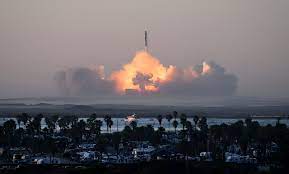
Breaking News
 2 Hours of Retro Sci-Fi Christmas Songs | Atomic-Age Christmas at a Snowy Ski Resort
2 Hours of Retro Sci-Fi Christmas Songs | Atomic-Age Christmas at a Snowy Ski Resort
 Alternative Ways to Buy Farmland
Alternative Ways to Buy Farmland
 LED lights are DEVASTATING our bodies, here's why | Redacted w Clayton Morris
LED lights are DEVASTATING our bodies, here's why | Redacted w Clayton Morris
Top Tech News
 Travel gadget promises to dry and iron your clothes – totally hands-free
Travel gadget promises to dry and iron your clothes – totally hands-free
 Perfect Aircrete, Kitchen Ingredients.
Perfect Aircrete, Kitchen Ingredients.
 Futuristic pixel-raising display lets you feel what's onscreen
Futuristic pixel-raising display lets you feel what's onscreen
 Cutting-Edge Facility Generates Pure Water and Hydrogen Fuel from Seawater for Mere Pennies
Cutting-Edge Facility Generates Pure Water and Hydrogen Fuel from Seawater for Mere Pennies
 This tiny dev board is packed with features for ambitious makers
This tiny dev board is packed with features for ambitious makers
 Scientists Discover Gel to Regrow Tooth Enamel
Scientists Discover Gel to Regrow Tooth Enamel
 Vitamin C and Dandelion Root Killing Cancer Cells -- as Former CDC Director Calls for COVID-19...
Vitamin C and Dandelion Root Killing Cancer Cells -- as Former CDC Director Calls for COVID-19...
 Galactic Brain: US firm plans space-based data centers, power grid to challenge China
Galactic Brain: US firm plans space-based data centers, power grid to challenge China
 A microbial cleanup for glyphosate just earned a patent. Here's why that matters
A microbial cleanup for glyphosate just earned a patent. Here's why that matters
 Japan Breaks Internet Speed Record with 5 Million Times Faster Data Transfer
Japan Breaks Internet Speed Record with 5 Million Times Faster Data Transfer
SpaceX Makes Progress on Second Test of Starship

On Saturday morning, SpaceX conducted its second test launch of Starship, the super heavy–lift rocket that could one day carry astronauts to the moon and Mars. The vehicle lifted off without incident from SpaceX's Starbase, on the southern tip of Texas, just after 7 a.m. local time. A new water-deluge system deflected the heat of the booster's 33 Raptor engines, preventing the kind of launchpad damage that occurred during the first launch last April—that test ended in self-detonation four minutes into flight, when the ship and the booster failed to separate. For the second run, SpaceX converted the rocket to a "hot staging" system, with the ship's six Raptor engines starting to fire, blasting the top of the booster, as the separation process began. This time, the uncoupling was successful. The booster broke apart shortly thereafter. The second stage carried on another five minutes, rising 90 miles skyward before exploding.

 $100 SILVER CONFIRMED?
$100 SILVER CONFIRMED?

